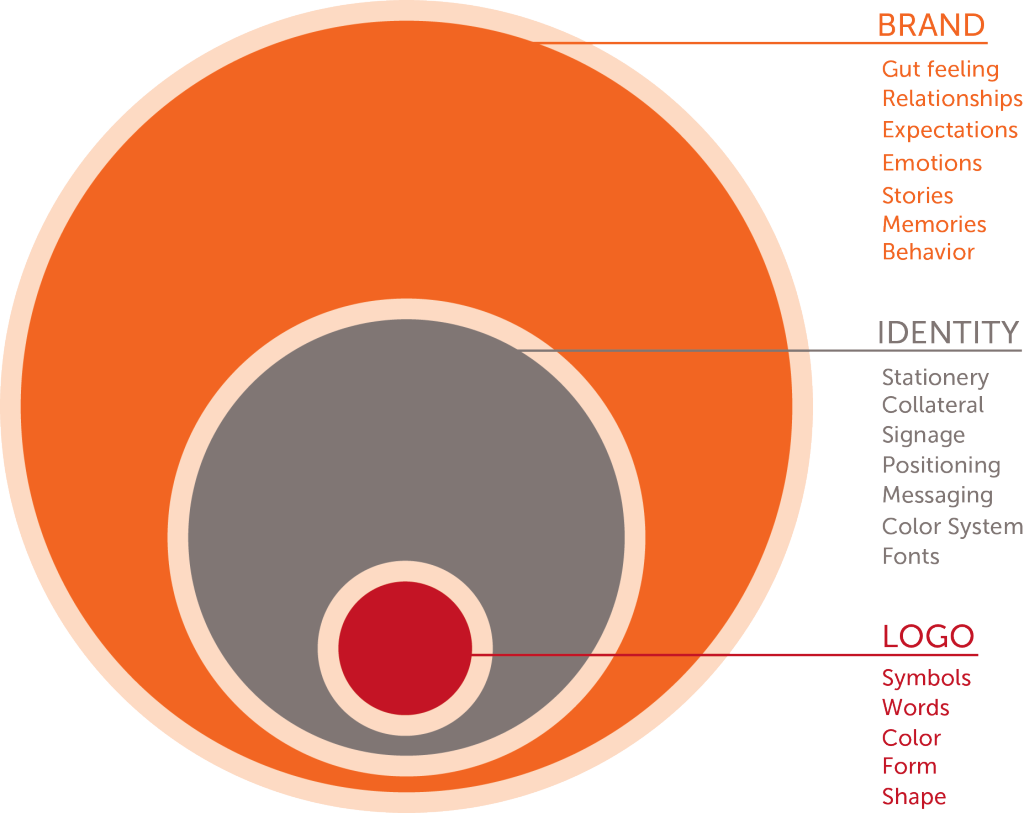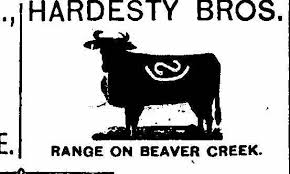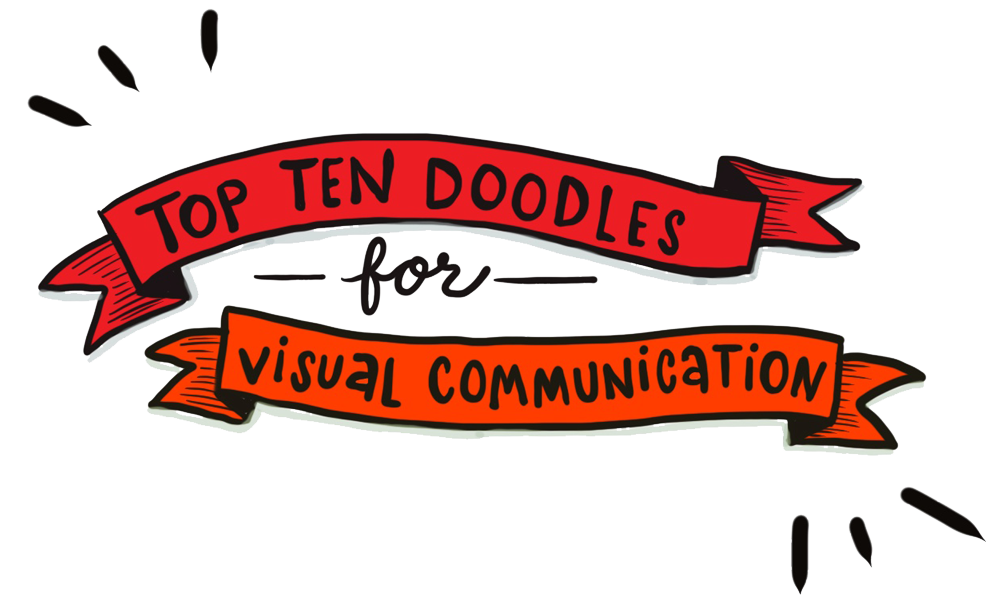The terms brand, identity, and logo can be can be difficult to distinguish. They mean different things, and I for one have been guilty of using them interchangeably. And if the brand strategist/designer is doing it, I know others may be muddled too. Let’s figure out the differences between these potentially confusing terms.
1. Logo is a mark that identifies the brand
The term logo derives from a Greek word, logotype. Logos means “word” and typos means “imprint.” The logo’s job is to “promote instant public recognition.”
As such, it is a critical part of the identity system, and, because many people are visual learners, the brand too. People see the visual mark and recognize its color, shape and form. Ideally the logo will become associated with the brand.
A logo most commonly consists of a symbol or icon along with words, such as United Way’s:
It can also be a logotype—a logo that is just words, with no symbol:
(I wanted to include an example of a real Greek logotype here, but I couldn’t read the words to know what I was choosing.)
Sometimes brands become so well-known that their logo can be just the symbol, with no identifying words. This doesn’t happen very often in the non-profit world. The Red Cross’s official logo contains both a symbol and words, but most people don’t need the words to know what this stands for:
There is some confusion between the words logo and brand, which are often used interchangeably. This may derive from the use of the word brand as it applies to cattle brands—the tradition of using a hot metal tool to burn an identifying symbol onto a cow’s hide, identifying it as part of a rancher’s herd.
2. Identity dictates all the ways the brand appears to your audiences
Identity – or visual identity, or visual identity system, or brand identity system – is a package of visual devices that an organization uses to communicate the brand, such as graphic imagery, a color system, fonts and yes, a logo. The system may or may not also include collateral such as stationery, brochures and signage, plus written content such as key messages and a positioning statement.
If you google visual identity system, you’ll get results like this one from Cal State Fullerton, the components of which include a logo, seal, emblem, wordmark, athletic logos, web headers, stationery systems, and colors—plus guidelines on how to use all this stuff in their university communications in a cohesive and consistent manner.
3. Brand (or branding) is the biggest part of this picture
Two well-known experts have thoughtfully defined what a brand is, so I’ll simply share their wisdom. These definitions work for for-profits and non-profits alike:
- Marty Neumeier states in his book The Brand Gap, “A brand is a person’s gut feeling about a product, service, or company. It’s not what YOU say it is. It’s what THEY say it is.”
- Seth Godin’s definition, from his blog: “A brand is the set of expectations, memories, stories and relationships that, taken together, account for a consumer’s decision to choose one product or service over another.”
People are emotional about brands, which makes it a difficult concept to define. They accumulate these “gut feelings” based on a set of experiences stemming from an organization’s behavior—everything from the way someone answers the phone to a signature file at the bottom of an email. I once heard brand described as the things someone says about your organization to their friend.
Geri Mazur, of Geri Mazur Marketing—one of our favorite strategic partners—adds:
A brand is not the same as a product. People buy products but they have relationships with brands. If you took away a person’s product, they would just buy the next one on the shelf. If you took away their brand, they would miss it.”
Here’s an example. If I say Red Cross, what immediately comes to mind? Most people think “bringing help to where it’s needed most.” Red Cross is one of the most well-known nonprofit brands in the world (this recent critical NPR story notwithstanding) that has successfully made an emotional connection with people.
…..
I hope this clears up any confusion surrounding the similar terms brand, identity and logo.
A strong brand can only be built upon a strong foundation, with messaging and design that is communicated clearly so clients and customers know and understand it—often in tandem with a branding agency like Stone Soup Creative.
To see if we can help you, schedule a complimentary 30-minute consultation.
Want to learn more?
- Designing A Brand Identity
- Branding, Identity, & Logo Design Explained
- Seth Godin, Define: Brand
- Brand vs. Logo: The Mystery Solved
Want more on Visual Communication and Visual Thinking? Here's some related content for you.
Logo Feedback Worksheet
If your organization is working with a designer, it’s helpful to know how to discuss and evaluate the designs being presented. This guide will help you through the process. Use this together with the Logo Evaluation Checklist.






